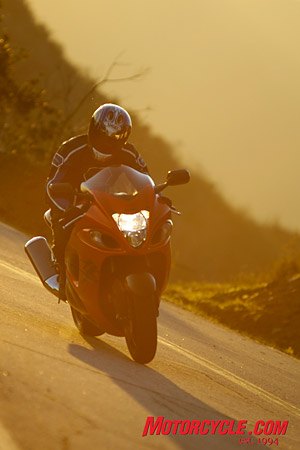Take a moment, or even a few seconds, and it's easy to see that Americans like things bigger, better, and faster. We drive big muscle cars as well robust luxury sedans, and have done so for decades. Need I say anything of the ubiquity of SUVs? Or how about how fat Americans have become thanks to huge meal portions.
The motorcycle world in America, for better or worse, follows suit. Large, extravagantly designed V-Twin-powered custom cruisers have dominated bike culture in the U.S. for several years now, essentially becoming the mainstream of motorcycling. Not only are the rear tires fatter than ever, the bikes have equally big torque figures, massive quantities of chrome, thundering exhausts and rider egos to match. If that example isn't clear enough, then just consider any Boss Hoss. Or how 'bout the modern Honda Gold Wing? That ultra-tourer is, as far as I'm concerned, a motorcycle designed specifically for the robust interstate highway system of the States.
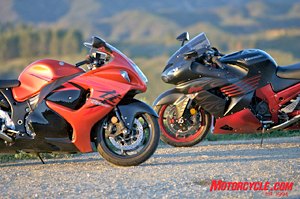 Like a couple of brawling Rottweilers, the Hayabusa and Ninja go head-to-head again in 2008. Like a couple of brawling Rottweilers, the Hayabusa and Ninja go head-to-head again in 2008. |
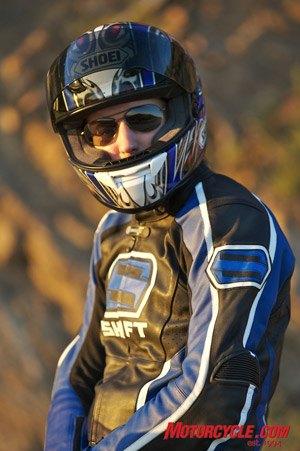 Here I sit, pondering the fates of the world's fastest imbeciles. Here I sit, pondering the fates of the world's fastest imbeciles. |
'No literbike can match the asphalt-peeling 100 ft-lbs of torque that pours forth from these 1340cc-plus hyperbikes.'
It stands to reason in my mind, then, that the truly super #or hyper# superbikes should be as plentiful as rice cakes at a vegan house-warming party. Yet, until just two years ago there was only one: Suzuki's GSX1300R Hayabusa. Previous to the 'Busa's birth there was Honda's CBR1100XX, affectionately known as the Blackbird. Honda shot it down after six years of flight ('97-'02). And for a time Kawasaki tried valiantly to battle the Suzuki's big bird with the ZX-12R, but it didn't have the torque numbers to compete; legions of Hayabusa fans were unwilling to jump ship. So, in 2006 Kawi decided that Suzuki's dictatorship of this class, if you can call a single player a class, should end and unveiled the biggest and baddest Ninja to date, the ZX-14.
Sure, the current crop of Japanese 1000cc in-line-Fours and Ducati's 1098 are capable of getting scary-close to the top speeds of the 'Busa and ZX, but those bikes are narrowly-focused race-bred sprinters. You just can't gobble up the miles on an R1 or CBR1000RR for example, however good the ergos, like you can on the ZX-14 or Hayabusa. And no literbike can match the asphalt-peeling 100 ft-lbs of torque that pours forth from these 1340cc-plus hyperbikes.
So here we are, two years after Kawasaki stepped into the ring, and these bikes remain the only machines in a universe all their own (apologies to BMW’s K1200S). Two big Japanese bikes perfectly suited for American tastes.
New Ninja weapons and a nastier bird
2008 Kawasaki Ninja ZX-14
For 2008 Suzuki, without verbalizing it, admitted that the company lost some ground to the new kid on the block, and so gave the GSX1300R its first and only major revision since the bike's 1999 debut. The ZX-14, barely two-years old, didn't seem ready for a heavy re-do in light of typical Japanese manufacturer re-vamp cycles; nevertheless it received some minor but effective tweaks. We've already covered the changes to both bikes in detail on Motorcycle.com, but a brief re-acquaintance is warranted...
Set a 2006 ZX-14 next to a 2008 model, paint them the same color, and I'll give you a dollar if you can tell them apart. All the Ninja's changes for '08 took place below the surface with the primary focus on an "enhanced bottom-end."
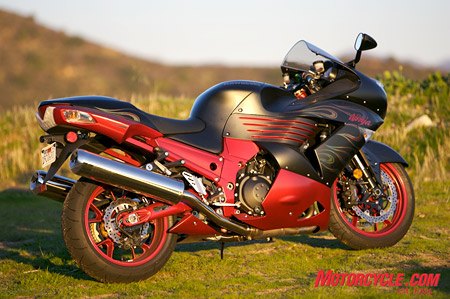 2008 Kawasaki Ninja ZX-14 in Special Edition paint.
2008 Kawasaki Ninja ZX-14 in Special Edition paint.
On the induction side of things, the lateral spray angle of the fuel injectors increased from 15 to 20 degrees in order to improve power delivery across the board, while the intake ports were refined for better flow. The cylinder head and its cover were altered to allow for 20-percent larger secondary air ports for an improved pathway into the exhaust. Additional tune-ups include reshaped pistons and a urethane liner on the inside of the magnesium chain cover; both aimed at reducing mechanical noise.
Further aiding improved stonk whilst keeping environmentally green, portions of each exhaust silencer were fiddled with, as was the length of the header pipes. Additionally, a 75% increase in the size of the entrances of the cross-over tubes that connect header pipes 1-4 and 2-3 was made due to the reshaped exhaust collector. All of this came about thanks to a free-loading third catalyzer that is the most likely culprit in the ZX's 11-pound dry weight gain (474 vs. 485 lbs.) Lastly, something called an "ASV," or Air Switching Valve, puts the final touches on reducing emissions. All these little changes not only were said to improve power to the low- and mid-range, but allegedly resulted in three more points on top to give the big Ninja a claimed 190 horses at the crank and 113.5 ft-lbs. Factor in ram-air and a bonus of 10 more horsepower jump on.
Capping off upgrades to the mightiest of Ninjas are improvements to the casting method for the aluminum portions of the monocoque frame. Switching from gravity- to die-casting, the desired affect being lighter pieces of the same strength.
2008 Suzuki Hayabusa GSX1300R
In order for Suzuki to reclaim the top of the heap, changes to the 9-year old 'Busa would be many. For starters, 1,299 cubic centimeters wouldn't suffice. While bore remained at 81mm, a 2mm increase in the stroke (63 vs. 65mm) gave the new bird a respectable 1,340cc powerhouse. Compression ratio increased from 11.0 to 12.5:1 thanks to new forged pistons that attach to a new forged crank via shot-peened chro-moly connecting rods. In the head, titanium valves (all 16 of 'em!) of the same size as the first gen 'Busa reduced rotating mass enough to warrant using only a single valve spring instead of the usual duo. A new camshaft with higher lift on both intake and exhaust sides has revised timing.
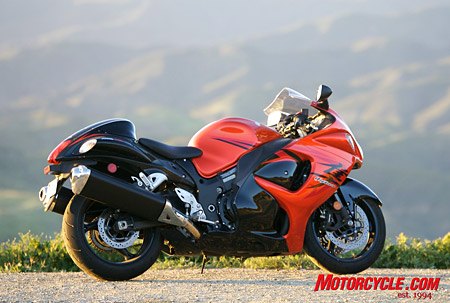 2008 Suzuki Hayabusa GSX1300R.
2008 Suzuki Hayabusa GSX1300R.
Fuel is sprayed through a new 12- hole injector system (previously 4-hole) into 44mm throttle bodies that employ Suzuki's Dual Throttle Valve system. A new superbrain ECU on this superbike is responsible for controlling Suzuki Drive Mode Selector (S-DMS), the same A-B-C switchable power setting as first seen on the '07 GSX-R1000, and now also on the '08 GSX-R600 and 750. All the engine mods add up to what Suzuki says is incredible 21-hp gain for a claimed 194 thoroughbreds and 114 ft-lbs at the crank. Yeah... that's what we’re talkin' 'bout!
Oddly enough, aside from bridging and internal ribbing to the swingarm to make it stronger, nothing else about the frame is different, apparently. But! Thank heavens Suzuki put some new radial-mount four-pot calipers on the front end to squeeze smaller 310mm rotors that are now 5.5mm thick. A new slipper clutch complements the upgraded binders.
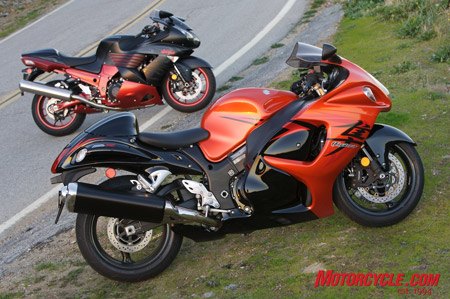 The 2008 Suzuki Hayabusa GSX1300R didn't receive a major styling revision from the first generation bike. Thank goodness, 'cause it looks as good as ever! The 'Busa's style is a major contributor to its nearly decade's worth of success.
The 2008 Suzuki Hayabusa GSX1300R didn't receive a major styling revision from the first generation bike. Thank goodness, 'cause it looks as good as ever! The 'Busa's style is a major contributor to its nearly decade's worth of success.
After nearly 10 years, one could reasonably expect that the Hayabusa may have gone under the knife to receive a drastic visual overhaul. Seems the slippery skin of the first fast bird proved to be rather efficient at cheating the wind and too iconic in its shape to risk a complete re-style, so no sweeping changes were made, just more refining. The 'Busa's look is trademark and a very big part of the bike's success. Put an '07 next to the new one and you'll note a few subtle changes to the side vent in the main cowling, reshaped ram-air ducts that closely resemble the original, a pared-down front fender and a marginally different headlamp. Items not so apparent to the naked eye that changed include a wider front cowl, a lower fuel tank for a better tuck behind the 15mm taller windscreen, passenger seat and rear subframe lowered for improved passenger comfort, an even larger pillion cover hump, integrated rear turn signals, body panel joints sans exposed fasteners and an LED tail lamp.
We'd be remiss if we didn't mention what seems so obvious about the look of the new GSX1300R: monster exhaust canisters. It still has a 4-into-2-into-1-into-2 design, but the cans seemed to have grown in size and taken on a rounded-triangular shape. They almost make us long for those utilitarian round cans found on virtually every sportbike in the late '90s. Here, too, Suzuki's hyperbike falls victim to evermore restrictive emission regulations as a catalytic converter was added where the head pipes meet under the engine, and like the poor ol' ZX-14, is most certainly accountable for a gain of 7 pounds, bringing the claimed dry weight up to 485. Full of fuel and ready to ride, the ZX scales in about 20 pounds less than the ’Busa.
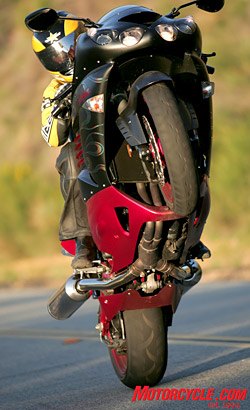 This is how we checked for the catalytic converter added for 2008 on the Ninja. The cat is probably the most likely culprit behind an 11-pound dry weight gain. This is how we checked for the catalytic converter added for 2008 on the Ninja. The cat is probably the most likely culprit behind an 11-pound dry weight gain. | 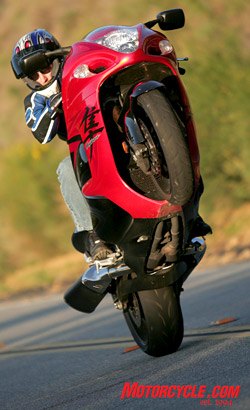 Here, too, we look for the catalyzer on the Hayabusa. Same problem holds true on the big bird as its cat is probably responsible for a 7-pound weight gain. Here, too, we look for the catalyzer on the Hayabusa. Same problem holds true on the big bird as its cat is probably responsible for a 7-pound weight gain. |
Tête-à-tête
Where on earth can a person sample such insanity on two wheels? NASA already had a shuttle launch scheduled when we acquired these beasts of speed, so our two-bike trip to Mercury wasn't happening. We then opted for tamer wrist action, keeping these rockets restricted to the highways and byways. A good assessment of twisty road action and superslab performance probably means more to you anyway. We fueled the giants and set off for a hyperbike head-to-head duel!
Climbing aboard the 'Busa and ZX gives a quick peek at what each manufacturer thinks matters most in the saddle. If bodywork influenced by the wind tunnel isn't indication enough, then maybe the Suzuki's longer reach to clip-ons placed below the triple clamp (though, oddly, they have risers) and dished-out fuel tank that allows you to tuck in as flat as possible behind a very effectively shaped windscreen will give you a clue that this bird is the sportier of the two. Also tipping its sport-inspired hand are footpegs that are more rearset than those on the big Ninja. There's no doubt that the 'Busa comes from GSX-R lineage.
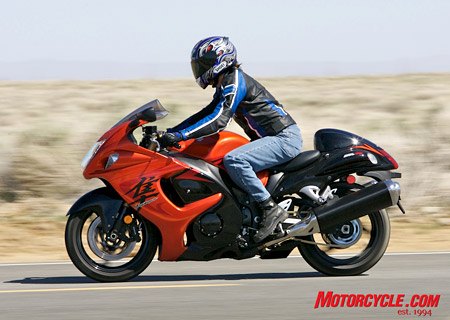 Clip-ons mounted below the triple clamp and a slightly farther reach may equate to a more efficient aero tuck, but also means a more uncomfortable ride as compared to the Ninja during freeway stints.
Clip-ons mounted below the triple clamp and a slightly farther reach may equate to a more efficient aero tuck, but also means a more uncomfortable ride as compared to the Ninja during freeway stints.
When ring leader Kevin Duke plopped his slim hiney on the Suzuki he quickly noted that "its thickly padded seat is low enough to make even shortish riders feel confident at stops, although the narrower front section of the Kawi’s seat is equally if not better in this respect." Robbing the big bird of any Iron Butt aspirations is the more aggressive riding position that tends to put more weight on a rider's wrists. Conversely, the ZX-14 could be a nominee for long-distance tours; at light speed, of course. With a noticeably more upright rider triangle and comfy one-piece seat, the Kawasaki is the more forgiving of the two, especially during a long freeway jaunt. A tighter seat-to-peg distance will be less appreciated by tall riders.
Cockpit layout on each bike further takes them in different directions. While I appreciated the analog instruments of the Hayabusa with its big silver-ringed tach and speedo that elicit the word 'classy,' I wasn't as enthused after a time about what I think is a small digital display in the middle. It offers up good, usable info like gear position, A, B or C of the S-DMS, clock and so forth, but it can be difficult to read at hyperspeed. And in this day of fuel tanks without reserve switches, I like the traditional-looking fuel and temp gauge. But the use of a low-fuel warning light seems rather redundant. Can't hurt, I guess.
Switching over to the Kawi we see that the company stuck with a white-faced speedometer and tach while throwing the digital age into the mix with a large, centrally positioned LCD panel featuring fuel and temp gauges, gear position and tripmeters as well as the added bonus of fuel range display and average or real-time fuel economy depending of your selection. It may not be as purdy as the Hayabusa's, but the Ninja's displays are easier to read, especially at speed.
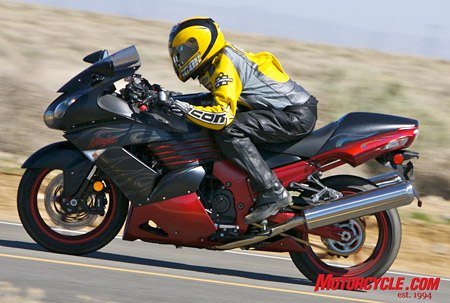 Tucking in on the Ninja doesn't yield the same streamlined profile as tucking in on the Hayabusa.
Tucking in on the Ninja doesn't yield the same streamlined profile as tucking in on the Hayabusa.
Enough of the mushy stuff, these things are go-fast devices! Thumb the starter on the Suzook, rev the throttle and a threatening snort emanates from the airbox while a deep rumble from the twin exhausts says that the '08 Hayabusa means business. Clicking into first gear is a snap with an easy clutch pull and what I thought to be a well-sorted transmission; properly timed throttle blips equaled clutch-less upshifts and downshifts. Twisting the round black tube on the right reveals a heavy throttle spring and very slight hesitation from closed to open throttle, but you'll soon forget that issue as the big powerplant revs quickly and ferociously all the way to the 11,000 rpm redline.
My seat-o-the-pants dyno says the Suzuki seems to rev harder than the Kawi. Actual dyno testing with our friends at Area P - No Limits reveals my gluteus maximus system to be fairly accurate. The 'Busa's power curve is remarkably linear, pulling hard from bottom to top, peaking with 165.2 hp at 9700 rpm and continuing on with more than 160 ponies all the way to its 11,000-rpm rev limiter. Peak torque is 101.5 ft-lbs at 7700 rpm. Funny thing about dyno testing, it can often offer facts contrary to what a rider thinks he or she is experiencing. For example, the Ninja feels extremely linear all the way to the top of its rev range, and it has a slight advantage below 4000 rpm. The engines run neck and neck until 6000 rpm when the ’Busa gains an advantage it holds until the same 11,000 revs. But don’t cry for the ZX. It’s making identical power at 8000 revs, and its 159.5 hp at 9500 rpm is just a fistful shy of the mighty Suzuki – you probably won’t notice the 3.2% difference. Torque peaks at 7800 rpm with 99.1 ft-lbs, which is 2% shy of the GSX.
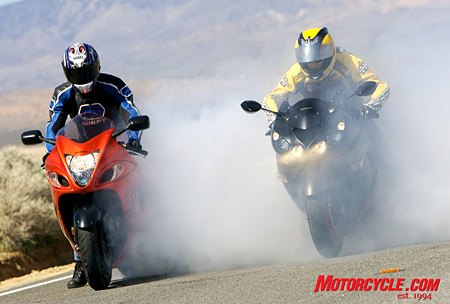 These bikes are en fuego!
These bikes are en fuego!
But there's more to this than squiggly lines on a graph. The Kawi’s motor spins freely, and more importantly is considerably smoother thanks to dual counter-balancers while the Suzuki has a single counterbalancer. Ultimately, Kevin sums it up when he reckons that "the Kawi’s strong hit off the bottom is preferable because it’s used all the time. Add into the equation the 14’s much smoother demeanor, and it is a motor to be reckoned with."
As for Suzuki’s Drive Mode Selector, we toggled through it a few times just to note the difference in power, but we spent nearly all our time in the full-power A mode. “I mean, who would want to own the most powerful bike in the world,” Duke asked rhetorically, “and then ride it with one-half the horsepower?” We suppose switching to the less aggressive throttle responses of B or C mode might be something useful when riding in the rain, but it otherwise seems gimmicky.
Electronic Gee-Wizardry and What It Means to ZX-14 Power
On the dyno, the Ninja’s fuel mixture is dreadfully rich from 8500 rpm and up, and it’s especially fat above 10K. This rich condition puts a damper on top-end horsepower, and the ’08 bike makes only 159.5 hp at its 9500-rpm peak compared to the previous version’s 171. Apparently the new bike’s Euro 3-compliant catalyzers can overheat unless the ECU pours extra fuel into the mixture.
But what if you fit an aftermarket exhaust system to your ZX, you might ask? There is supposedly a lot more power to be uncorked. A new pipe takes the delicate cats out of the equation, but then you’re still stuck with the stock mapping and electronics.
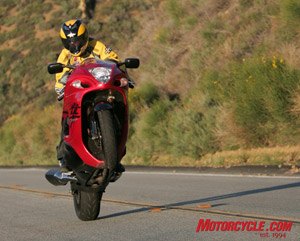 "Somebody get me off this thing! I need to reboot the flux capacitor for less gyration!" "Somebody get me off this thing! I need to reboot the flux capacitor for less gyration!"
But legendary tuner Rob Muzzy says his many customers who bought Power Commanders and mapping from him have had no such issues. This configuration plus the addition of a high-performance Muzzy's pipe will have the ZX knocking on the 200-horse door; change out the air filter to a performance item will net an honest 200 horses at the rear wheel on pump gas, he says. A similarly equipped ’Busa will put up an identical number. “It’s amazing how similar these two motors are,” said Muzzy.
The previous edition of the ZX-14 has its own tuning issues to achieve max output. The 2006-07 models were electronically set to keep the fuel injection’s secondary throttle butterflies from opening fully until around 7000 rpm in the first two gears for fear that that imprudent wrists would result in unexpected acceleration and be thrown off the back of the bike; in addition, the ignition was electronically retarded in the low gears to reduce power. Drag-racing types learned to get around this problem by removing the secondary butterflies and plugging in new mapping for the ECU.
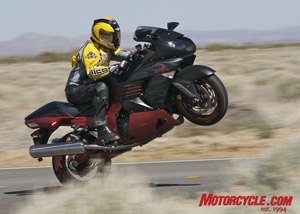
.
In the ’08 ZX, the secondaries open up quicker, so it has much more immediate acceleration in the lower gears. Our 2008 ZX-14’s motor pulls like a locomotive off the bottom end, stronger even than the vaunted Hayabusa, and it’s a major improvement over the old bike because a rider can enjoy this newfound punch during every run through the gears. It’s only at the top end – a place few dare to tread – that the biggest Ninja somewhat disappoints because of its overly rich fuel mapping. can derestrict the top speed of the ZX-14 by making the ECU think it’s going 10% slower. Muzzy hinted at a product in development that will alleviate these issues. Look for it this summer.
-Kevin Duke, Ed-in-Chief |
One thing we didn't need a dyno to tell us was that the Kawasaki's throttle has a lighter, crisper feel relative to the Suzuki. Something that Suzuki engineers either didn't notice or care to quell was a bothersome buzz from the engine. Kevin remarked vibration was noticeable at roughly 4500 rpm, but "becomes obnoxious just a few hundred revs later, unfortunately right around the 80-mph cruising speed on California highways." Not a good thing with all the freeway time these things are capable of. The big assassin from Big Green is much smoother at the same speed and turns approximately 400 rpm less.
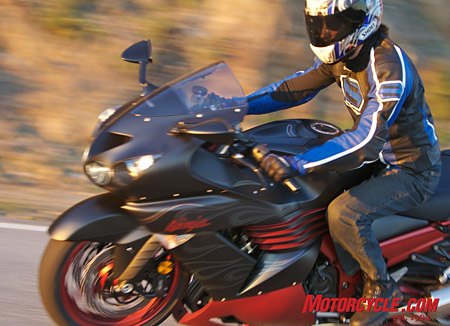 Although the speed of the big Ninja can distort time and blur photos, you can still see in this shot how much more upright the rider triangle is.
Although the speed of the big Ninja can distort time and blur photos, you can still see in this shot how much more upright the rider triangle is.
Ride quality from both bikes is good. The Hayabusa, aside from vibey engine and racey position, is a very stable and supple freeway performer. Fully-adjustable 43mm inverted Kayaba fork with DLC (Diamond-Like Carbon) coating paired with a fully-adjustable Kayaba shock do an excellent job of smoothing out expansion joints, but really crummy pavement can be a bit jarring. The Ninja's fully-adjustable 43mm Kayaba inverted fork and trick Bottom-Link Uni-Trak linkage connected to a fully-adjustable shock are softer... er, um, even more forgiving.
Handling characteristics show these steeds to be different animals. Part of the reason the Hayabusa is such a stable straight-line champ is due to its 1-inch longer wheelbase (58.5" vs. 57.5"); rake is fractionally mellower (23.4 vs. 23.0 degrees) and 3.7-inches of trail is identical to the Ninja.
The tale of tape doesn't tell all, however. What the Suzuki lacks in total rider comfort it makes up for when you reach contorted stretches of road. The GSX-R side of the Hayabusa really comes out in the canyons with a very planted-feeling front and firmer suspension. "Its steering is more direct and the bike turns in more neutrally than the ZX," according to Grand Master Duke.
|
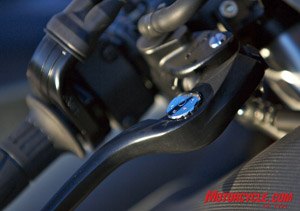 A couple of slick touches that the ZX has are radial-pump master cylinders and adjustable levers with slightly more adjustment than the 'Busa's levers. A couple of slick touches that the ZX has are radial-pump master cylinders and adjustable levers with slightly more adjustment than the 'Busa's levers. |
The Ninja is no sloth in the canyons, but it lacks the front-end sureness of the 'Busa. The ZX's softer suspension translates into some pitching and yawing during quick transitions in tight corners. Yet, the less-than-half-a-degree steeper rake and use of the slightly older Bridgestone Battlax BT014 on the Ninja lends to its ability to "bank into turns quicker," as Kevin put it. I simply saw it as not as confidence-inspiring as the Hayabusa with its steering damper and newer Battlax BT015 tires.
With all the constable-attracting power in these bikes, they need braking power to match. Put simply, the Kawi gets a gold star while the Suzuki needs to return to its seat and repeat the assignment. Though the 'Busa's binders are a marked improvement over the inferior six-pot units on the first generation bike, they still can't hang with what the Ninja has. Both bikes have radial-mount four-piston calipers, but the Ninja also uses four pads instead of the Hayabusa’s two. The ZX also has petal-type rotors and a radial-pump master cylinder. Even the Ninja's clutch system employs a radial-pump master cylinder. Not so on the Bird. Same ol' standard masters as before. There's more than enough power to stop the Suzuki, but it lacks the great feel that allows for one-finger finessing and even more pinching power of the Ninja's binders. This was one area that the Suzuki plainly came up short.
Big bikes, little choices
There we have it then, a regular game of tit-for-tat with these two. Where one rises, the other slumps, and vice versa. Although we never had the chance to run this duo at a dragstrip, published tests reveal little to choose between them.
Little things are what it comes down to for these very big bikes. Things like the Ninja's more stylish mirrors that are the slightest bit more functional than the Hayabusa's square jobs. Or stuff like a one-piece saddle on the Kawi that's much more accommodating for a passenger or soft luggage. The Suzuki's pillion seat, though bigger, well, looks a lot like that of the smaller Gixxers: sporty. Perhaps you're a tank bag kinda rider. Get the straps out if you buy the Ninja because the fuel tank's plastic piece won't be takin' no magnets, but the 'Busa's all-metal tank will. Another tidbit, however useful or not, is that the Ninja's adjustable brake and clutch levers had a range of 1 though 6; the Suzuki's levers went from 1 to 5. See where we're going with this?
In this very narrow league of hyperbike, fans of each are fiercely loyal, and choosing between such evenly matched monsters comes down to all the little subjective stuff mentioned above. And in this test that holds true for us, too. Oh, if it were only so easy to have 15-plus horsepower or 20 ft-lbs more of torque to make the decision for us. What ultimately wooed Kevin, Alfonse and myself toward the Kawasaki was its roomier, more forgiving quarters that made enjoying its better spread of torque and power (not peak, mind you!) fun on the long haul or daily commute where we imagine most folk will spend the majority of their time. And speaking for myself, I just couldn't get over how much better the Ninja's brakes are.
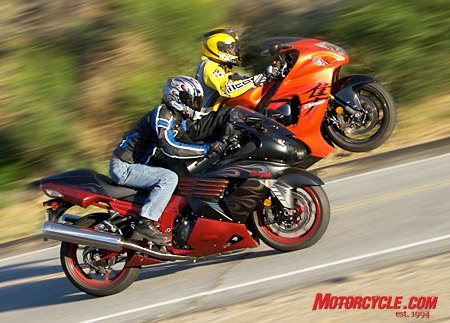 The mighty Hayabusa feels that its chances at winning may be slipping away, and so in a childish fit wheelies ahead of the confident Ninja.
The mighty Hayabusa feels that its chances at winning may be slipping away, and so in a childish fit wheelies ahead of the confident Ninja.
Reaching into the ultimate of subjectiveness, appearance, we would probably lean toward the more subtle stylings of the Ninja (sans flame job!) if we had to live with one of these two year after year. I still like the Suzuki's funky fairings though; its like a 500-pound piece of candy. Finally, we shouldn't overlook the $300 savings in MSRP that can be had with the Ninja.
With such well sorted super-superbikes as these in a country that loves bigger, bolder and more beautiful like most Americans do, I just can't figure out why we don't see more of them from other bike makers.
Maybe an inquisitive call to poke Honda in the side with a sharp stick is in order...
| Kawasaki ZX-14 | view specs |
| The Perfect Bike For... |
| The rider who wants to win the bracket races at the dragstrip then ride comfortably on a 200-mile trip back home. |
|
| Highs: | | Sighs: |
- Nearly painless mile-eater
- Nearly omnipotent power
- “I don’t ride a Hayabusa”
| - Muted top-end power – damn cats!
- Missiles don’t like tight corners
- Autobahn on the wrong continent
|
| Suzuki Hayabusa | view specs |
| The Perfect Bike For... |
| A speed freak who appreciates riding an icon that has a colossal amount of aftermarket support beyond anything else in sportbikeland. |
|
| Highs: | | Sighs: |
- The most powerful sportbike in the world
- GSX-R handling lineage
- Massive street cred
| - Engine vibes relatively harsh
- “My 40-year-old wrists hurt!”
- Difficult to be inconspicuous
|
Source : motorcycle.com
![]() . .
. .









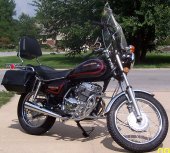







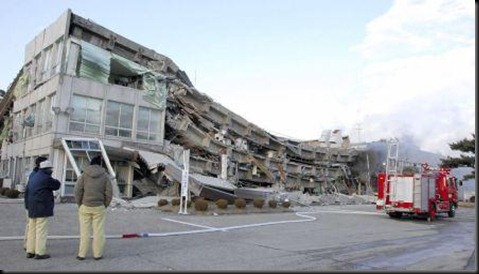
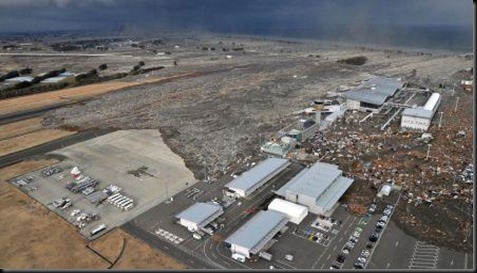





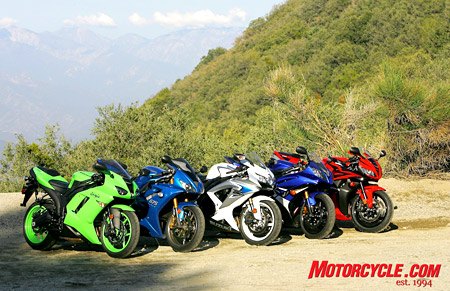 The contenders in Motorcycle.com’s 2008 Supersport Shootout.
The contenders in Motorcycle.com’s 2008 Supersport Shootout.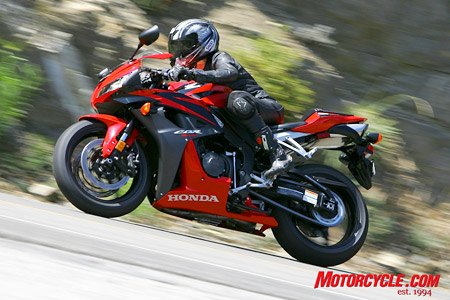 The ‘08 CBR600RR returns to the supersport fray unchanged from last year and undaunted by the task of taking on updated models from Suzuki and Yamaha.
The ‘08 CBR600RR returns to the supersport fray unchanged from last year and undaunted by the task of taking on updated models from Suzuki and Yamaha.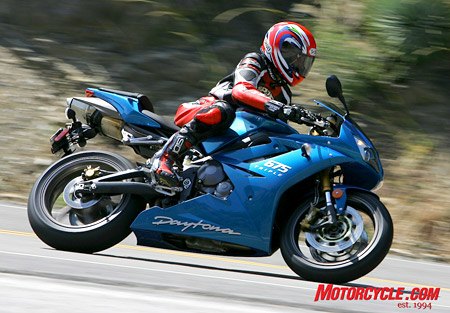 Triumph’s Daytona 675 is the old man of the group being unchanged since its 2006 introduction. This bike doesn’t need Depends though; the world seems to love it!
Triumph’s Daytona 675 is the old man of the group being unchanged since its 2006 introduction. This bike doesn’t need Depends though; the world seems to love it!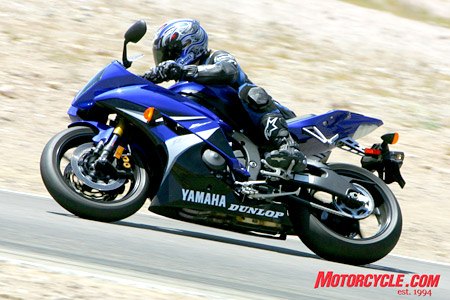 This year was revision year for the formidable R6.
This year was revision year for the formidable R6.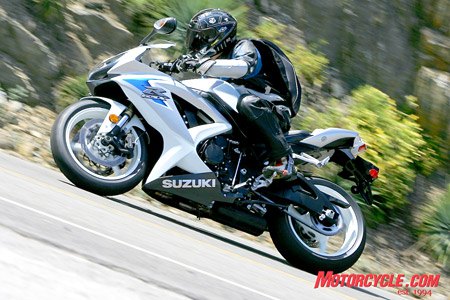 Not only did the 2008 GSX-R600 get engine and chassis updates, it also got a new look. Other motorcyclists commented on it every time we parked it somewhere.
Not only did the 2008 GSX-R600 get engine and chassis updates, it also got a new look. Other motorcyclists commented on it every time we parked it somewhere.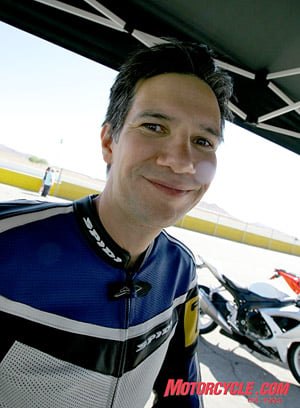 Steve “Speed” Kelly returns from our 2008 Literbike Shootout. He’s English, but we love ‘im anyway.
Steve “Speed” Kelly returns from our 2008 Literbike Shootout. He’s English, but we love ‘im anyway.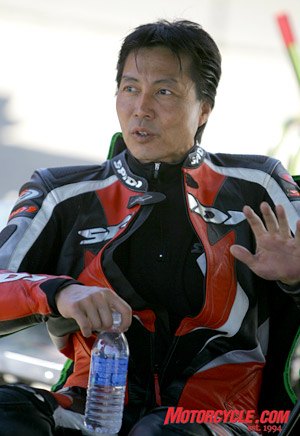 Kaming Ko tagged along for the five-bike battle. This smooth cat helped us realize how poorly we ride for people 15 years his junior.
Kaming Ko tagged along for the five-bike battle. This smooth cat helped us realize how poorly we ride for people 15 years his junior.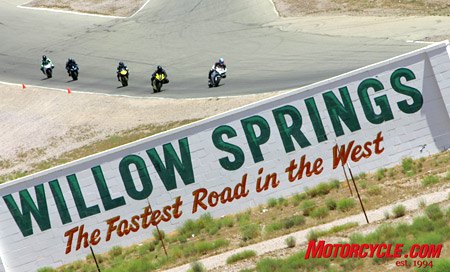 Let the testing begin!
Let the testing begin!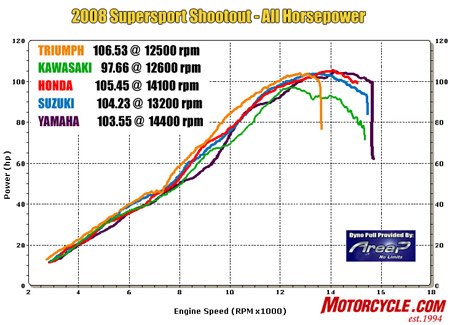 As you can tell from the orange line, the Triumph's motor makes more power at nearly every point on the graph. The Honda (red) and Suzuki (light blue) trade spots for best among the four-cylinder bikes. The R6 has big power up top but lags behind the others everywhere else, which greatly affected its street performance scores.
As you can tell from the orange line, the Triumph's motor makes more power at nearly every point on the graph. The Honda (red) and Suzuki (light blue) trade spots for best among the four-cylinder bikes. The R6 has big power up top but lags behind the others everywhere else, which greatly affected its street performance scores.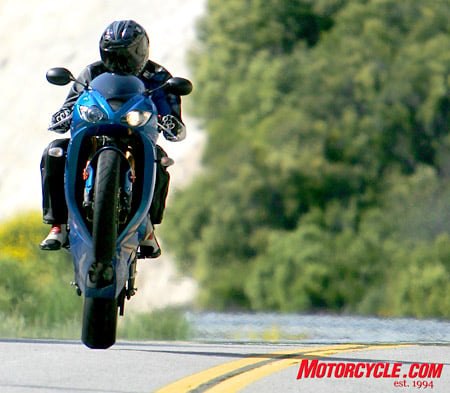 The 675’s smashing success in the Engine category was thanks to all the wonderfully torquey things its inline-Triple mill offers.
The 675’s smashing success in the Engine category was thanks to all the wonderfully torquey things its inline-Triple mill offers.
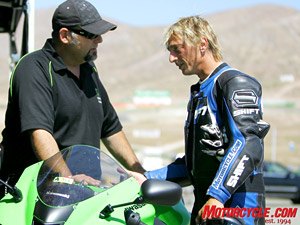 Duke learns that meeting EPA regulations hampers racetrack performance.
Duke learns that meeting EPA regulations hampers racetrack performance.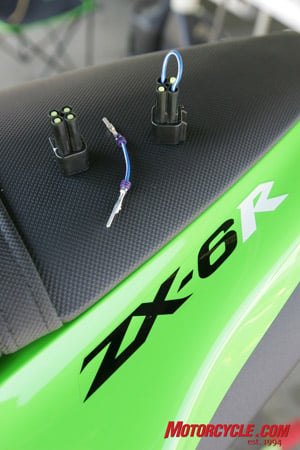 Really cheap power boost.
Really cheap power boost.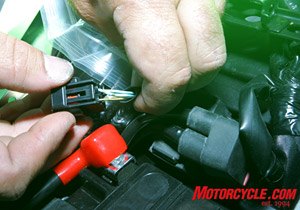
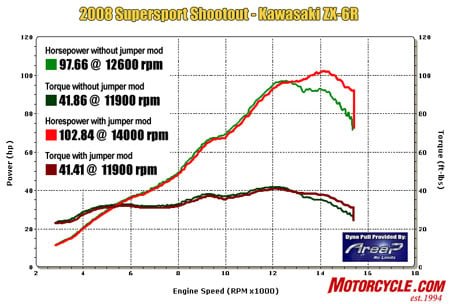 In stock form, the ZX-6R runs out of breath at high revs, but the ECU jumper mod lets it run like it should. In modified form, it posted a 5-horse boost in horsepower and a much more usable overrev zone.
In stock form, the ZX-6R runs out of breath at high revs, but the ECU jumper mod lets it run like it should. In modified form, it posted a 5-horse boost in horsepower and a much more usable overrev zone.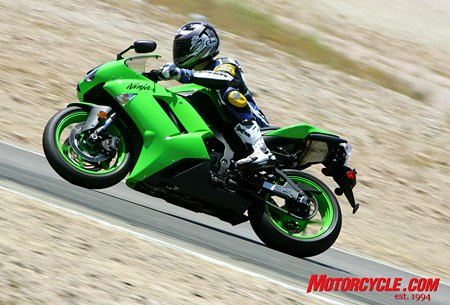 The ZX-6R’s transmission and clutch were rated highest for their performance on the track as well as on the street. Both worked flawlessly.
The ZX-6R’s transmission and clutch were rated highest for their performance on the track as well as on the street. Both worked flawlessly.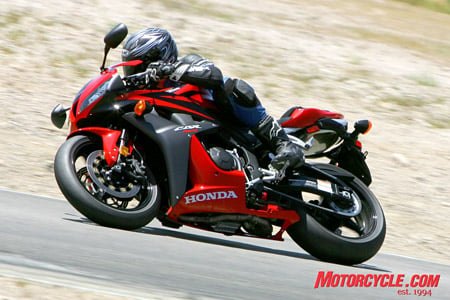 Handling supremacy is a hallmark of the CBR600RR. It scored highest for its light and accurate steering and its confidence-inspiring stability.
Handling supremacy is a hallmark of the CBR600RR. It scored highest for its light and accurate steering and its confidence-inspiring stability.












